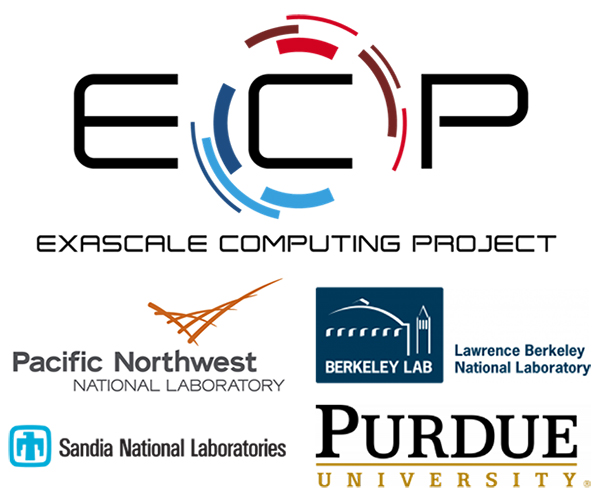Advanced Computing, Mathematics and Data
Research Highlights
March 2017
PNNL-Led Co-Design Center to Enhance Graph Algorithms for Exascale Computing Project
Recently, a PNNL-led proposal, “ExaGraph: Combinatorial Methods for Enabling Exascale Applications,” was selected as the fifth Exascale Computing Project (ECP) Co-Design Center. The center will focus on graph analytics, primarily combinatorial (graph) kernels. These kernels can access computing system resources to enhance data analytic computing applications but are among the most difficult to implement on parallel systems. Mahantesh Halappanavar, the Analytics and Algorithms Team Lead with ACMD Division’s Data Sciences group, will lead the center with Aydin Buluç, from Lawrence Berkeley National Laboratory; Erik Boman, of Sandia National Laboratories; and Alex Pothen, from Purdue University, serving as co-principal investigators.

PNNL is leading the fifth Exascale Computing Project Co-Design Center, which according to ECP leadership puts the program in “a better position to ready current and evolving data analytic computing applications for efficient use of capable exascale platforms.”
Enlarge Image.
According to Halappanavar, the center will tackle developing key combinatorial algorithms arising from several exascale application domains such as power grid, computational chemistry, computational biology, and climate science. These applications and their respective growing data volumes increasingly pose an unprecedented need for larger computational resources to solve problems. This complexity will drive selection of kernels and their integration among software tools. To start, the intent is to work with the scientists involved in related ECP projects, such as NWChemEx, to fine-tune software tools that will perform on current and future extreme-scale systems, as well as enhance scientific discovery by providing more computation and flexibility to do what is needed for large volumes of data.
“In the end, the applications will need to benefit from the tools that incorporate the algorithms targeted for exascale architectures,” Halappanavar explained.
As part of the four-year project, the ExaGraph Co-Design Center will investigate a diversity of data analytic computational motifs, including graph traversals, graph matching and coloring, graph clustering and partitioning, parallel mixed-integer programs, and ordering and scheduling algorithms.
“The ExaGraph Co-Design Center’s aim is to highlight the value of graph kernels via co-design of key algorithmic motifs and science applications along with the classical hardware-software co-design of algorithmic kernels,” Halappanavar said. “These graph algorithms will augment how data analytics are performed for applications and scientific computing.”

PNNL’s Mahantesh Halappanavar is Principal Investigator of the ECP ExaGraph Co-Design Center.
Beyond its initial launch, Halappanavar noted the ExaGraph Co-Design Center aims to deliver a software library. The library will feature a set of frameworks that implement combinatorial kernels that can communicate with each other to enable scientific computing, which further empowers basic science research.
In addition, Adolfy Hoisie, PNNL’s Chief Scientist for Computing and Laboratory Fellow, explained that having a PNNL-led ECP Co-Design Center that takes advantage of Halappanavar’s considerable expertise and unites some key collaborators is a welcome and synergistic addition to the laboratory’s research landscape and capabilities.
“The ExaGraph Co-Design Center is technically important to ECP and will provide significant contributions that benefit its overall exascale program in a way that can be accessible and useful across many scientific application areas,” Hoisie said. “I look forward to seeing this center grow.”
About ECP
The U.S. Department of Energy’s Exascale Computing Project is responsible for developing the strategy, aligning the resources, and conducting the R&D necessary to achieve the nation’s imperative of delivering exascale computing by 2021. ECP’s mission is to ensure all the necessary pieces are in place for the first exascale systems—an ecosystem that includes mission critical applications, software stack, hardware architecture, advanced system engineering and hardware components to enable fully functional, capable exascale computing environments critical to national security, scientific discovery, and a strong U.S. economy.
The ECP is a collaborative project of two U.S. Department of Energy organizations, the Office of Science and the National Nuclear Security Administration.
Related
